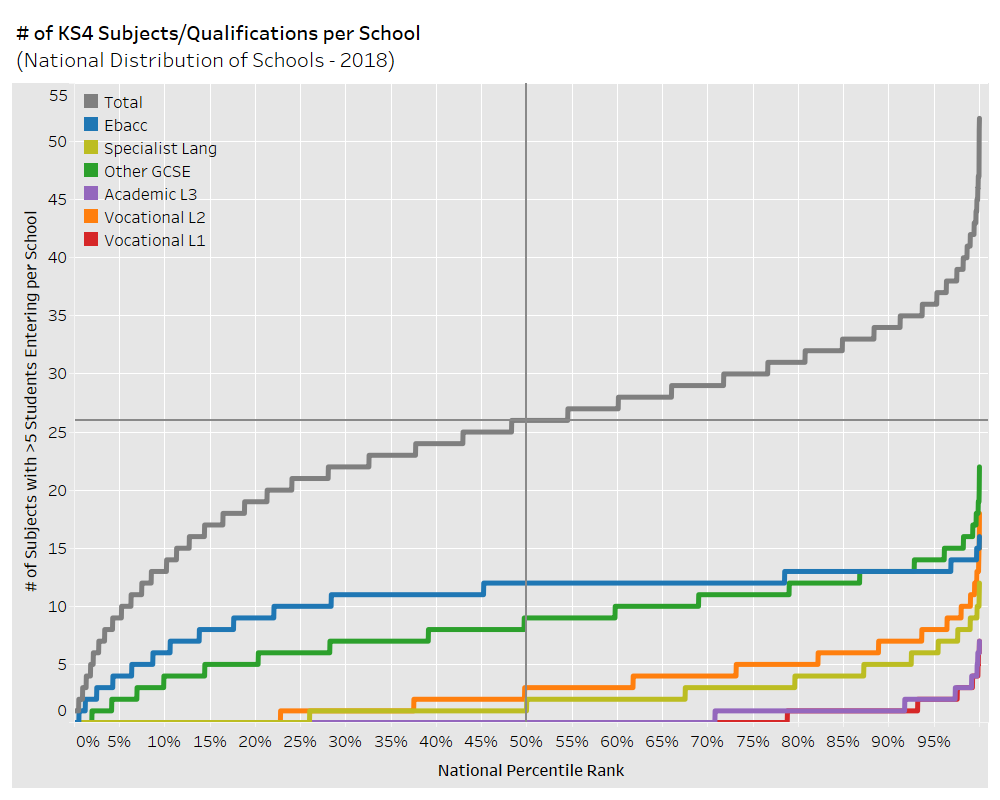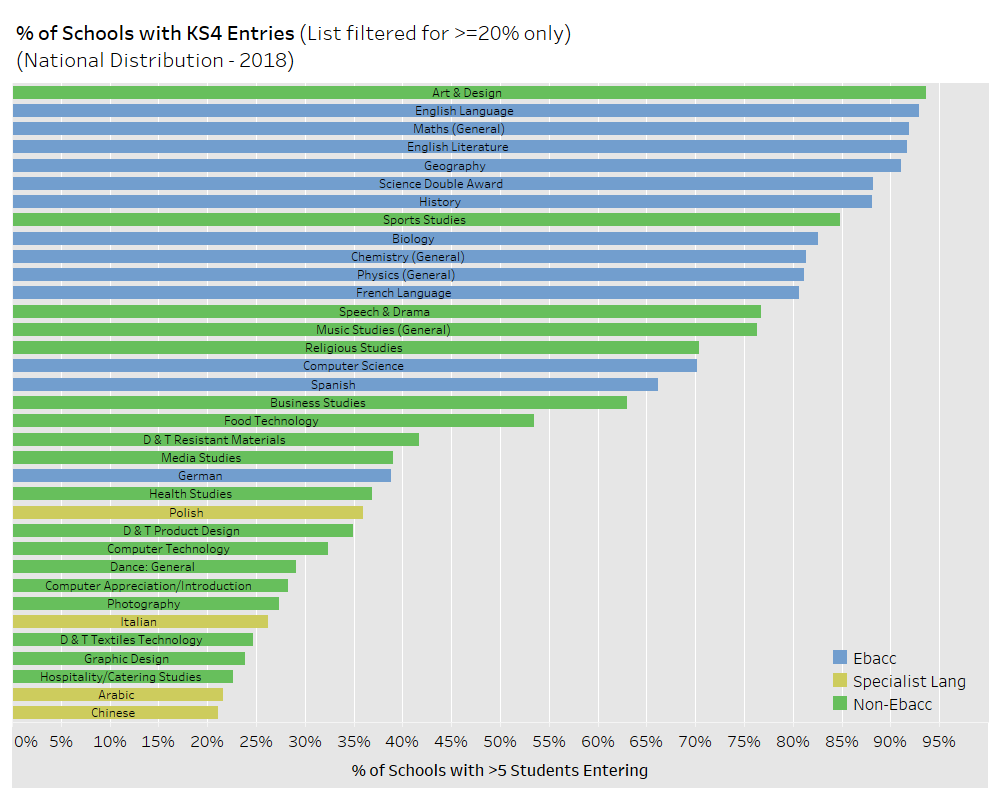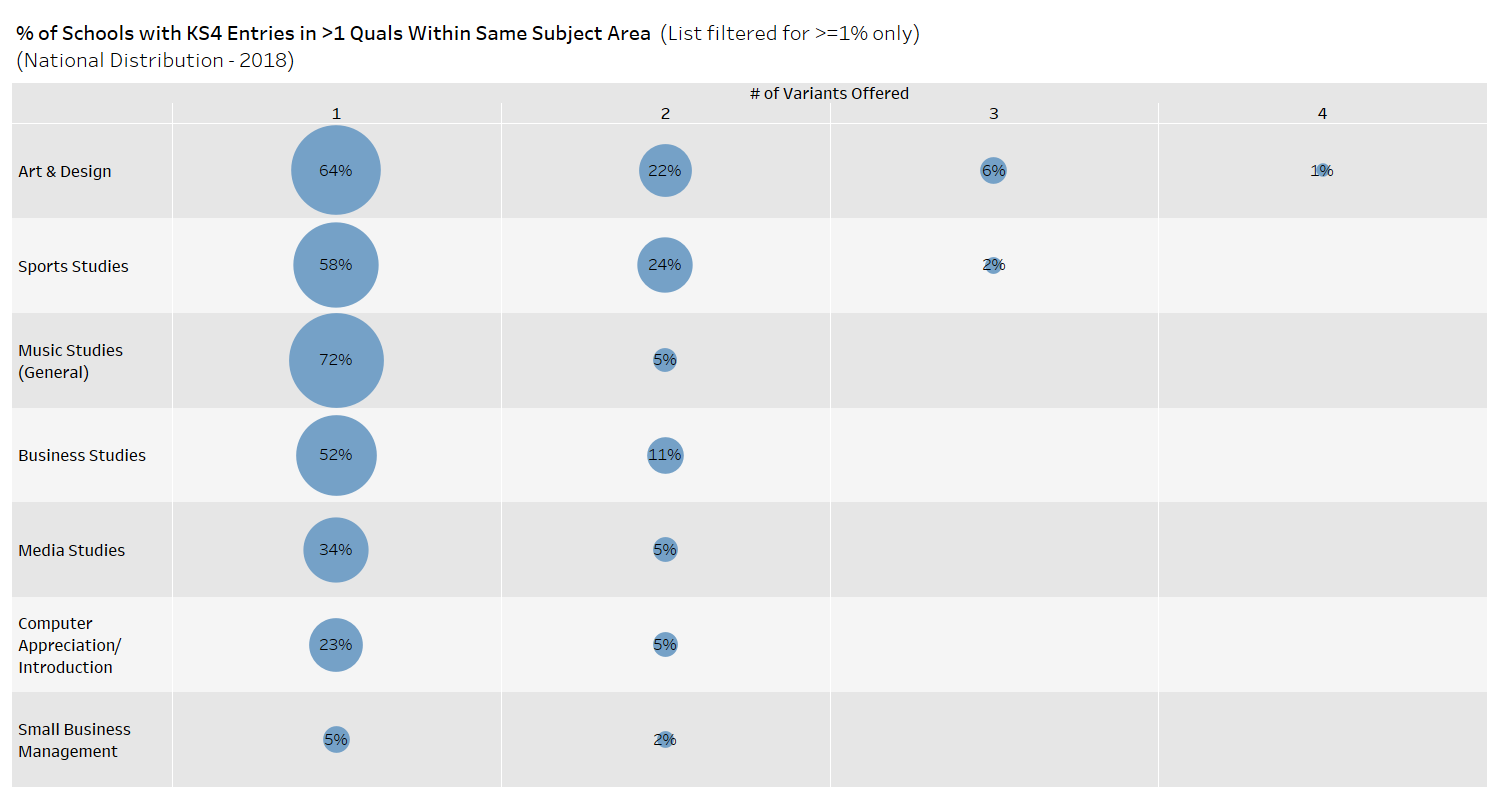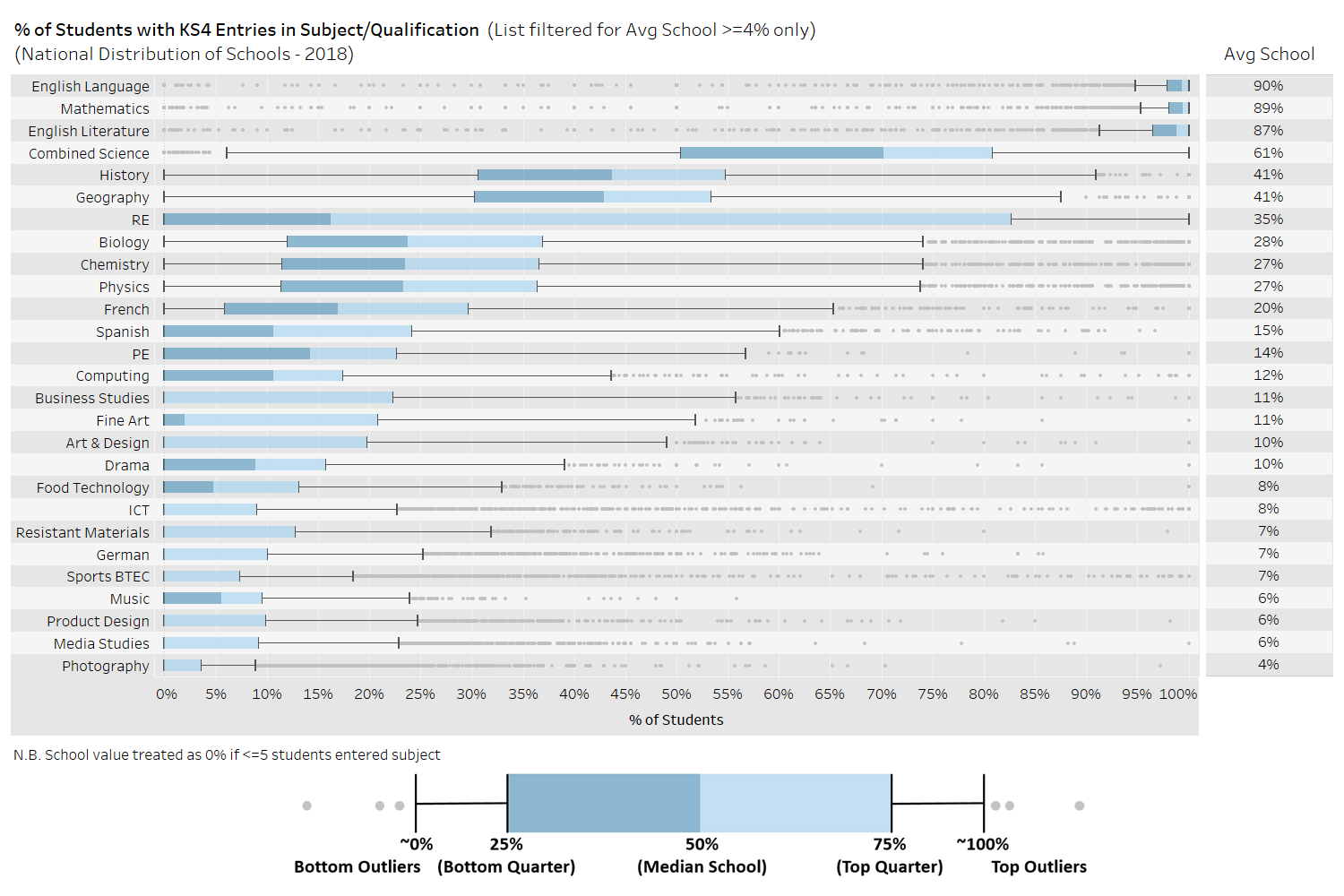
Rich Davies is Ark's Director of Insight. He is responsible for bridging the gap between the organisation's data and action. He advises senior leaders on strategic issues and works to ensure that all Ark leaders, teachers and students can make data-informed decisions. He has overseen the development of Ark's award-winning data analytics systems and has led reviews of assessment, curriculum, destinations and many other key areas.
Introduction
This blog series explores all aspects of 'curriculum', but my posts specifically focus on macro-curriculum - the subjects and qualifications we teach, their availability to different students, and the resource we invest in teaching them.
My objective is to help make schools' macro-curriculum decisions more explicit, as well as informing them with data where possible.
The three types of macro-curriculum decision I explore in these posts are:
- Student entitlement
- School breadth
- Lesson context
You can read my previous post on 'student entitlement' decisions here.
2. School breadth
'School breadth' decisions determine a school’s overall provision of subjects and qualifications. This provision cannot necessarily be experienced in its entirety by any individual student, but it can obviously limit what any individual student is capable of experiencing.
How many subjects/qualifications should a school offer?
A nationally ‘typical’ school offers around 26 subjects/qualifications, including ~12 EBacc GCSEs, ~9 Non-EBacc GCSEs, ~3 Level 2 equivalents and ~2 specialist languages (often not actually taught at the school itself). Meanwhile, 10% of schools offer 35 or more subjects/qualifications and 10% of schools offer 14 or fewer.

Source: DfE Compare Schools Performance - KS4 Qualification and Subject Data 2017-18
If we discount the extreme ends of these curves, we see that most schools offer 10-12 EBacc GCSEs, but the range of other qualifications on offer does vary much more – i.e. from 5-15 other GCSEs and from 0-5 vocational qualifications.
Which subjects/qualifications should a school offer?
The vast majority of schools offer English, Maths, Science & Humanities & Art (N.B. These values fall short of 100% due to some schools offering iGCSEs, which are not included in the published DfE data-set).

Source: DfE Compare Schools Performance - KS4 Qualification and Subject Data 2017-18
PE, Triple Science, Drama, Music, RE, Computing and French/Spanish are offered in more than two thirds of schools. In total, around twenty GCSE subjects are offered in more than half of schools, but no specific vocational subject is offered in more than 20% of schools.
Should there be multiple variants/qualifications available for similar subjects?
- If so, how many and under which circumstances?
Offering multiple variants of the same subject is relatively rare. Art, Sport, Music, Business, Media & Computer Appreciation are the only subjects that are likely to be offered via multiple variants/qualifications (e.g. GCSE and BTEC) within the same school.

Source: DfE Compare Schools Performance - KS4 Qualification and Subject Data 2017-18
Art is available in 2+ variants in around a third of schools while 2+ variants of PE are offered in a quarter of schools, but all other subjects not listed above have very few if any instances of schools offering multiple variants.
What proportion of students should participate in each subject?
- If not all students, what should criteria be? (e.g. choice / attainment)
English & Maths are typically taken by almost all students in a school, but participation rates drop steeply outside of these subjects. Combined Science is typically taken by ~70% of students, while History and Geography participation rates tend to only be ~40%.

Source: DfE Compare Schools Performance - KS4 Qualification and Subject Data 2017-18
RE has one of the widest ranges of participation rates across different schools; while a quarter of schools have 80-100% participation, at least another quarter have 0% participation (with the other half of all schools falling somewhere in between these two extremes). Meanwhile, Triple Science is taken by >25% of students at half of all schools, while only a quarter of schools have similarly high participation rates for Spanish, PE, Business or Art.
Statistical outliers ranging up to 100% participation do occur for most subjects, but the vast majority of schools fall within the distributions plotted above. Further to these, the long tail of subjects not shown all have average participation rates below 4%, with most schools at 0% participation and a small proportion of schools entering up to 10% of students, as well as a few outliers with high rates.
Given the sheer variation seen for every single subject, it’s clear that very few schools are likely to be truly similar in terms of the macro-curriculum of their KS4 students. For anyone wondering how these differences might influence schools' apparent performance, I recommend FFT Datalab's excellent analysis of KS4 subject variation.
What non-examined 'subjects' should be included in the wider macro-curriculum?
- If so, which 'subjects' (e.g. Literacy, PSHE etc) and under which circumstances?
This data is not officially captured, but anecdotal evidence suggests that schools with particularly challenging intakes are increasingly likely to supplement ‘regular’ lessons with supplementary sessions on literacy, numeracy and other ‘enabling’ subjects.
The delivery of PSHE/Citizenship is often embedded within form/tutor time, but it is not unusual for these non-examined aspects of the macro-curriculum to occupy 5-15% of the school week.
So what?
When considering this set of questions, schools need to ask themselves “how broad should our offer be?”. They should then seek to understand where their answers put them on the national spectrum and consider how their own unique context influences these decisions. Again, while there are no ‘right’ answers, schools still need to feel confident that they have made these decisions in an informed way.
In my final post, I will look at 'lesson context' decisions.

